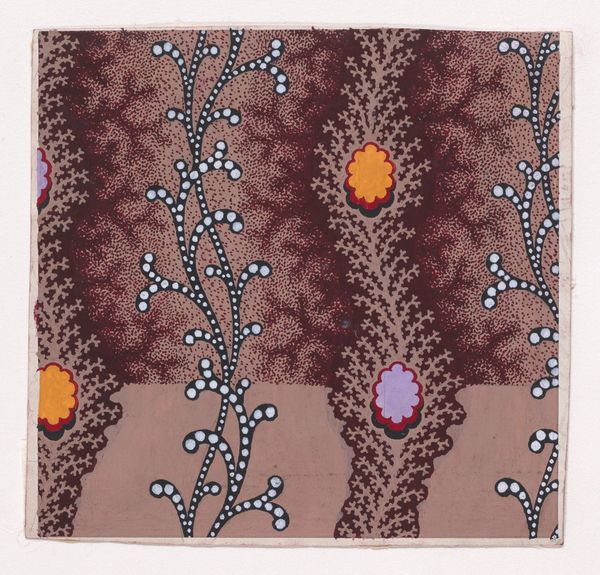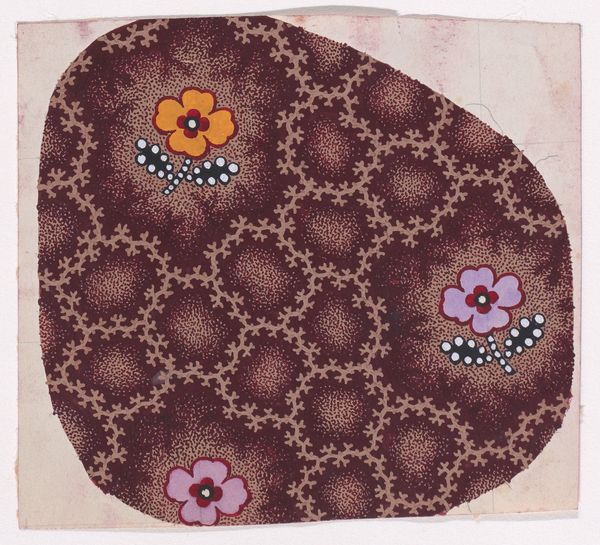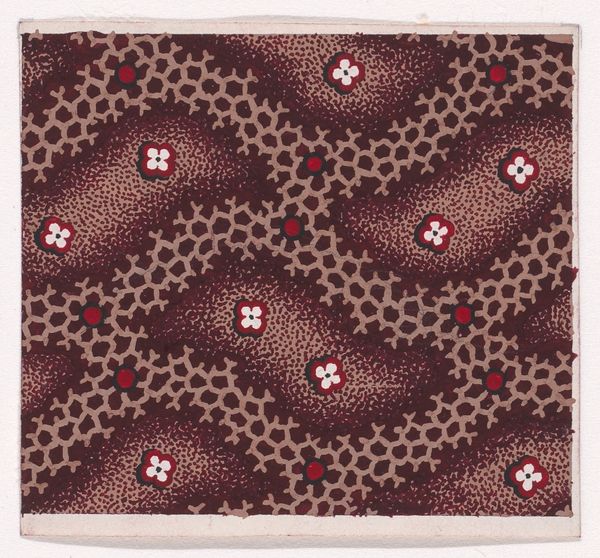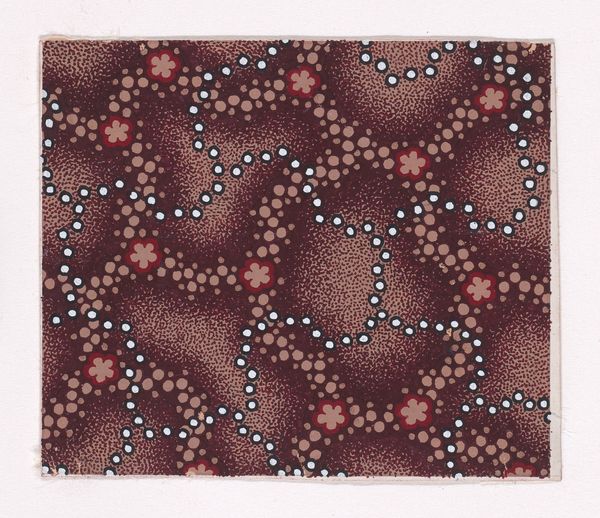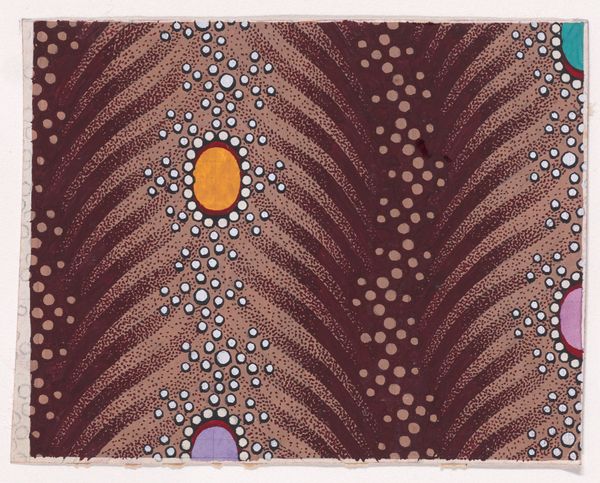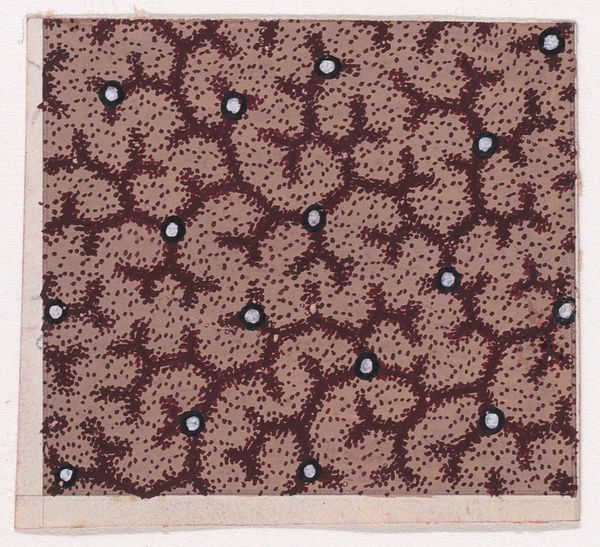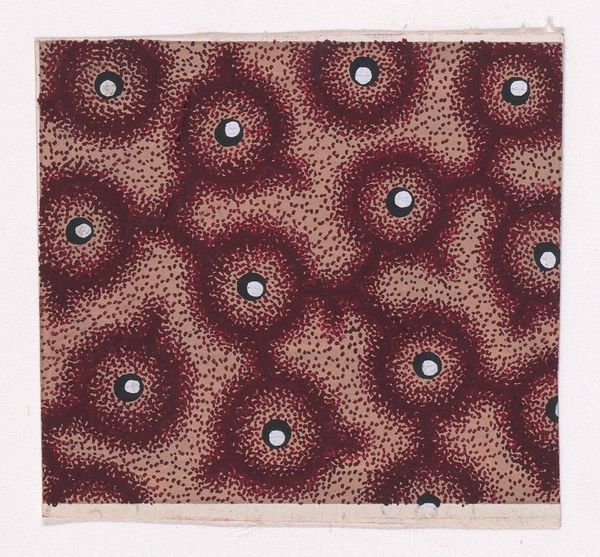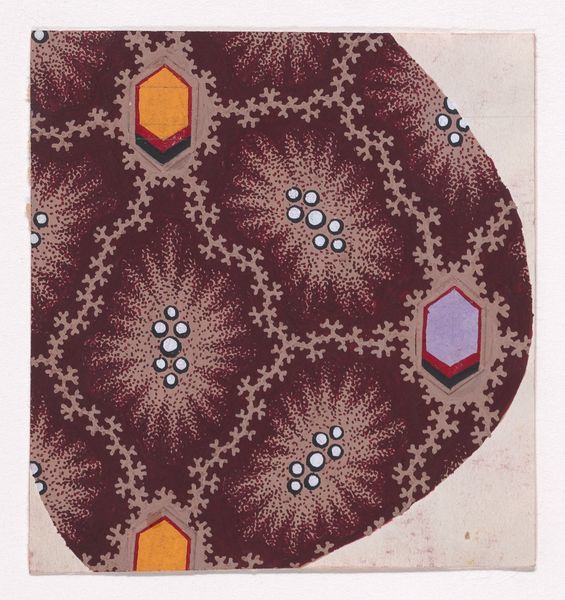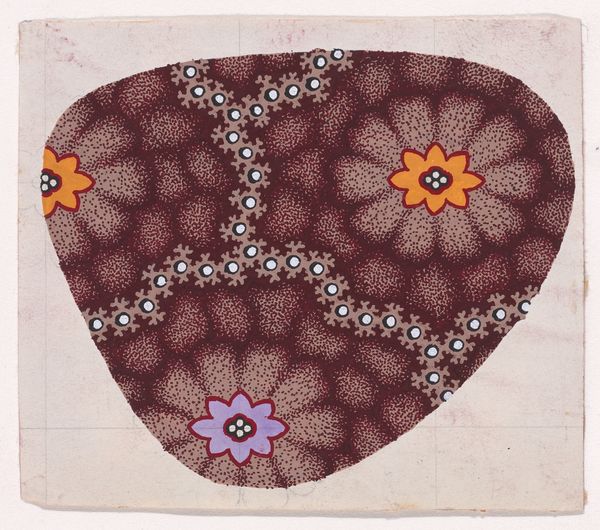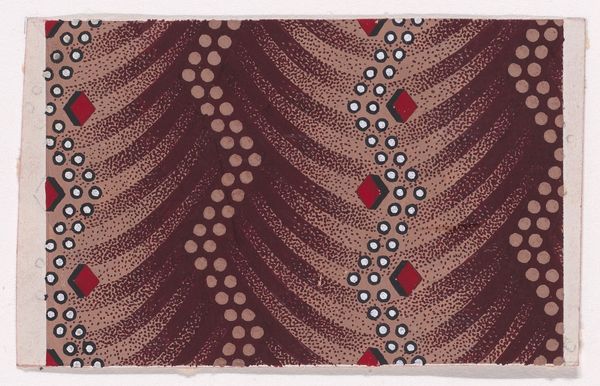
Textile Design with Vertical Undulating Garlands of Stylized Daisies with Pearls and Leaves over a Stippled Background 1840
0:00
0:00
drawing, print, textile
#
drawing
# print
#
textile
#
flower pattern
#
textile design
#
decorative-art
#
imprinted textile
Dimensions: Sheet: 4 5/8 × 4 1/2 in. (11.7 × 11.5 cm)
Copyright: Public Domain
Editor: Here we have an anonymous textile design from 1840, "Textile Design with Vertical Undulating Garlands of Stylized Daisies with Pearls and Leaves over a Stippled Background." The drawing has a really calm, soothing effect... like something you'd see in a Victorian-era parlor. What’s your interpretation of this design? Curator: Well, its apparent simplicity belies a complex social narrative. Consider the Arts and Crafts movement this anticipates; the insistence on handcrafted design during the rise of industrial production was inherently political. How do you think the emphasis on stylized natural forms played into anxieties surrounding industrialization at the time, specifically regarding the exploitation of labor, and the changing role of women? Editor: So, you're saying it's not just a pretty pattern? Curator: Precisely. The daisies, pearls, and leaves, seemingly innocuous, are carefully arranged in repeating patterns. This echoes the rhythmic labor of textile production, while simultaneously aestheticizing it. It also begs us to examine who had the leisure to appreciate such a design, and who was actively engaged in its creation. Who was the audience for these textiles and how might this influence our modern understanding of gendered domestic roles? Editor: That’s interesting. I hadn't considered it in terms of labor and social class before, focusing on the image only as "decorative art." Curator: Exactly. And the very notion of "decorative art" is ripe for deconstruction! The rigid categorization of "high art" versus "decorative art" is itself a product of power structures that devalue craft and labor. So how might we reclaim textile art to include it in high art forms? Editor: I learned a lot today. Now, I look at this artwork through a critical lens, relating it to social structures. It's no longer just decorative. Curator: Excellent! Remember, art doesn't exist in a vacuum. By examining its social and historical context, we can unlock richer, more meaningful interpretations.
Comments
No comments
Be the first to comment and join the conversation on the ultimate creative platform.

